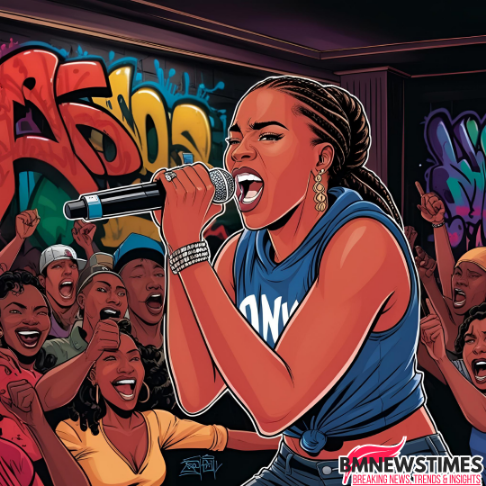Introduction to Rappers and Hip-Hop Culture
Rappers have shaped modern music, blending poetry, rhythm, and social commentary into powerful art forms. From the streets of New York to global stages, hip-hop has become a dominant force in entertainment. Rapper like Tupac Shakur, The Notorious B.I.G., and Jay-Z revolutionized the genre, turning personal struggles into universal anthems. Today, artists such as Kendrick Lamar and Drake continue pushing boundaries, proving hip-hop’s lasting influence. Whether discussing female rapper, underground lyricists, or chart-topping stars, rap remains a voice for the unheard. This article dives deep into the world of rapper, their history, and their cultural significance.
The Golden Era: 90s Rapper Who Changed the Game
The 1990s marked hip-hop’s golden age, introducing legendary rapper whose impact still resonates. Artists like Nas, Wu-Tang Clan, and Snoop Dogg brought intricate storytelling and raw authenticity to the genre. East Coast vs. West Coast rivalries, notably between Biggie and Tupac, defined an era of intense competition and creativity. Meanwhile, female rappers like Lauryn Hill and Missy Elliott broke barriers, blending rap with R&B and pop influences. The 90s also saw the rise of conscious rap, with groups like A Tribe Called Quest addressing social issues. This decade laid the foundation for modern hip-hop, influencing today’s best rappers of all time.

Female Rapper: Breaking Barriers in a Male-Dominated Industry
Female rapper have fought for recognition in a genre historically dominated by men. Pioneers like Queen Latifah and MC Lyte paved the way for today’s stars, including Nicki Minaj, Cardi B, and Megan Thee Stallion. These artists challenge stereotypes, blending fierce lyricism with unapologetic confidence. The rise of female rapper has also sparked conversations about gender equality in hip-hop. From Lil’ Kim’s bold persona to Noname’s socially conscious rhymes, women continue redefining rap’s landscape. Their contributions prove that hip-hop isn’t just a man’s world—it’s a platform for all voices.
White Rappers and Their Place in Hip-Hop
White rapper have played a controversial yet undeniable role in hip-hop’s evolution. Eminem, often ranked among the greatest rapper of all time, earned respect through unmatched technical skill and raw honesty. Other influential white rapper include Beastie Boys, who brought punk energy to rap, and Mac Miller, whose introspective lyrics resonated with millions. While some critics question cultural appropriation, artists like Post Malone and Machine Gun Kelly blend rap with rock and pop, expanding the genre’s reach. Their success highlights hip-hop’s universal appeal, transcending racial boundaries while honoring its roots.
Rappers That Died: Legends Gone Too Soon
The hip-hop community has mourned many rapper that died tragically, leaving behind legacies cut short. Tupac Shakur and The Notorious B.I.G.’s unsolved murders remain defining moments in music history. More recently, Pop Smoke’s rising career was halted by gun violence, while Juice WRLD’s struggles with addiction led to his untimely death. These losses spark conversations about mental health, violence, and the pressures of fame. Yet, their music lives on, inspiring new generations of artists. Tributes and posthumous releases ensure that their voices are never forgotten.
Regional Rap Scenes: Detroit, Atlanta, and Chicago Rappers
Different cities have shaped unique rap styles, contributing to hip-hop’s diversity. Detroit rapper like Eminem and Big Sean brought gritty lyricism, while Atlanta rapper such as OutKast and Migos popularized trap music. Chicago rappers, including Kanye West and Chief Keef, blended drill beats with introspective themes. Each region’s sound reflects its cultural and social struggles, from poverty to police brutality. These local scenes birthed some of the best rappers of all time, proving that hip-hop is a global language with regional dialects.
Christian Rappers: Faith Meets Hip-Hop
Christian rappers merge spirituality with hip-hop, offering uplifting messages in a genre often associated with rebellion. Artists like Lecrae and NF have gained mainstream success, proving that faith-based rap can resonate widely. Their lyrics tackle personal struggles, redemption, and social justice, appealing to both religious and secular audiences. Christian rap challenges stereotypes, showing that hip-hop can be a force for positivity. As the genre grows, it continues bridging the gap between gospel and street culture.
The Big 3 Rappers: Who Dominates Today’s Scene?
The debate over the “big 3 rapper” reflects hip-hop’s ever-changing hierarchy. Currently, Kendrick Lamar, Drake, and J. Cole are often named as the top three, thanks to their lyrical depth, commercial success, and cultural impact. Kendrick’s socially charged albums, Drake’s record-breaking hits, and J. Cole’s storytelling prowess set them apart. However, newer stars like Travis Scott and Lil Baby are rising, challenging the status quo. The “big 3” discussion highlights rap’s competitive nature, where only the most innovative thrive.

FAQs About Rappers
Who are the best rapper of all time?
Consensus often includes Tupac, Biggie, Jay-Z, Nas, and Eminem, though newer stars like Kendrick Lamar are also contenders.
Which female rappers changed hip-hop?
Queen Latifah, Missy Elliott, Nicki Minaj, and Cardi B revolutionized the industry with their unique styles.
Why did so many rappers die young?
Violence, health issues, and systemic struggles in hip-hop culture have contributed to many early deaths.
What defines a great rapper?
Lyricism, flow, originality, and cultural impact are key factors in determining greatness.
How has regional rap influenced hip-hop?
Cities like Atlanta, Chicago, and Detroit have each contributed distinct sounds, shaping rap’s evolution.
Conclusion: The Enduring Legacy of Rappers
From underground movements to global dominance, rappers have redefined music and culture. Whether through the raw energy of 90s rappers, the boldness of female rappers, or the introspection of Christian rappers, hip-hop remains a powerful storytelling medium. As new artists emerge, the genre continues evolving, proving that rap is more than music—it’s a movement. For the latest on hip-hop culture, visit BM News Times.







